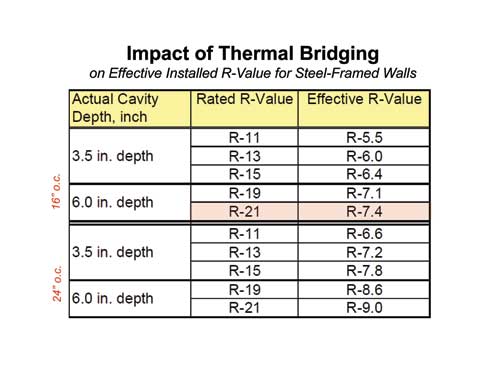Navigating Wall Assembly Fire Testing
On the other hand, some reasons why the architects may choose to install mechanically fastened building wraps over the exterior insulation are: ease of installation, lack of blind penetrations behind the insulation, and the protection of the insulation seams from air/water exposure. Also, when fluid-applied or self-adhered membrane products are installed on the exterior face of the continuous insulation, it is important that they have adequate adhesion to the surface of the insulation and that the insulation facer is sufficiently bonded to the insulation.
As mentioned, insulation levels in building enclosures have been steadily rising thanks to the green building movement and the energy codes. For example, in the 2012 IECC and ASHRAE 90.1 2012, the mandated use of continuous insulation (c.i.) increased for every climate zone. Insulation is considered continuous when it is installed on the exterior side of the base wall in order to reduce the effect of thermal bridging on the overall R-value of the wall assembly.
With ample studies effectively showing the extent to which thermal bridges compromise R-values by providing a means of high heat flow conductance through the building envelope, this has helped spur the newer c.i. requirements. To avoid de-rated R-values of between 40 percent and 60 percent, insulation must continuously run across all structural members without thermal bridges, outside of fasteners and service openings.
Putting things into perspective, Meyer points out that this new code development essentially eliminates the “choice” of whether or not to use continuous insulation and virtually mandates foam on exterior walls.
Although there are insulation alternatives to foam, and some specifiers are opting to go with these materials in an attempt to avoid NFPA 285, at the same time, they are compromising on the higher thermal performance of foam.
 |
|
Because thermal bridging so significantly compromises the effective installed R-value in wall assemblies, continuous insulation code requirements have come about. Source: Assembly U-Factors for Steel-Frame Walls, ASHRAE 90.1-2007; image courtesy of DuPont Building Innovations |









